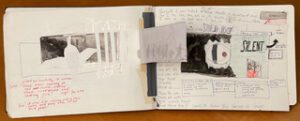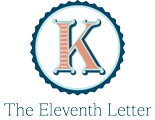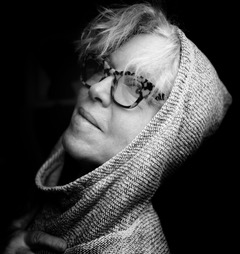Duston Spear has artworks in the collections of the Brooklyn, Metropolitan, and Weatherspoon Museums. She holds an MFA in writing from Vermont College of Fine Arts and an MA from New York University. She received an Art Matters Fellowship for the 3 Women in Black project (https://en.m.wikipedia.org/wiki/Duston_Spear), a Creative Time award, an Opportunity Grant and sponsorship from the New York Foundation of the Arts. Spear collaborated with Judith Clark to make an operatic video, Red Thread: the prisoner and the painter (https://www.amazon.com/Red-Thread-Prisoner), receiving awards from the New York State Council on the Arts in Media and The Puffin Foundation. Excerpts from her manuscript have been published in Susurrus Magazine and the Gordon Square Review. Artworks made for Bird Girls Can Fly have been featured in The Penn Review and About Place Journal. Her essay “Writing About Art” is included in Higher Education and the Carceral State (Routledge Press, March 2024).
Headshot photo: Jon-Marc Seimon
Jocelyn Winn: Creative minds see the world through a unique set of lenses, every single thing we do, see, touch, or experience seeps into our palette in an array of interpretations. As both a writer and a visual artist, do you keep any type of log or tracking of these daily nuggets to return to at a later time? Any type of daily ritual or practice to sustain ongoing projects?
Duston Spear: I started keeping a sketchbook in 1976 when I graduated from Parsons School of Design. The earliest ones are painful to visit with their youthful academic figure studies laced with elaborate cursive centered around fan girl lines like, “I find myself falling in love with painting.” While I was falling out of love with my Greenwich Village theater-crowd of friends and veering toward Soho. Soho, so deserted in the ‘70s you could get a free brunch with a glass of red wine.
Later I switched to moleskins books, the big ones with thick creamy blank pages, the white going toward buff, and when gel pens came out I bought the thickest width, pressing my fingertips to the wet lines to smudge my drawings and notes with shadow duplicates. Ten years ago, I started to print on the layered side of the pages the age I was when I kept that book, this makes a good reference guide for looking up past projects. These sketchbooks will be my legacy. They are immediate, intimate, immersive.
Most of the books are studded with a weekly calendar. A practice I started every Monday morning forty years ago when I was a single mother in Soho with two little daughters. A rectangle fills the page, on the top there’s a line for Person, Project, Goal, and under that a grid of the days of the week broken into am, aft, pm. These calendars are visual markers, ways to be organized about the mechanics of what I need to accomplish inside a creative life.

Duston Spear, Sketchbook for video: Red Thread, the prisoner and the painter, 2012.
JW: There’s a long list of writers who share their passion with visual arts, from Leo Tolstoy and Lorrainne Hansberry to Clarice Lispector and Frederico Garcia Lorca. How do you situate your work in the lineage of other writer-artists? In the context of art movements or styles?
DS: My daughters’ father had his own set of rules around being a painter. The first was never to let “them” (artworld influencers) know that you did anything else. His example was based on the time he was playing the piano by ear during a studio visit and the dealer examining his canvases suggested he focus on music. Impressionable, I never acknowledged my writer’s side. Instead, I made paintings using text, primarily the “lines” of Stephen Crane from his book of poems War Is Kind – sarcastic and caustic. I have only recently learned about the long history of artists-writers—like finding some family in Dublin you didn’t know you were related to, I am immersed in reading as many as I can, or another example, Dostoevsky’s first drafts, Cy Twombly’s canvases pale beside the Russian novelist’s gorgeous scribbles, it’s the thinking behind the scratches that finishes me.
JW: Your writing employs a highly inventive, unique-to-you, grammatical structure. I’d go so far as to say it’s your trademark—lists, fragments, splices, sentences that aren’t but act perfectly as if they are. It’s fascinating, like a brush stroke the world has never seen. What is the intention behind that for you?
DS: Ah Jocelyn, aren’t you kind to refer to my horrible relationship with the rules of grammar as a signature style. I love your suggestion that I write with “a brushstroke the world has never seen.” Tombstone material. Painting, drawing, unless you’re an apprentice in the Italian Renaissance, there are no set rules but writing, OMG. I’m often told I write like a painter. I’m so image driven. I like to draw certain scenes before I write them. During Covid I painted a whole show of paintings as my protagonist. When my husband (photographer Jon-Marc Seimon) saw them in my studio he said they were wonderful, and I corrected him, “They’re not mine, they’re Rebekah’s.”
JW: Your visual works are ripe with social commentary. How do your visual and written works collaborate, or perhaps overlap, with each other in the making of meaning?
DS: I think the exhibit Read (Sara Tecchia Gallery, Chelsea 2005) is a good example of social commentary delivered through text. I had shown a group of paintings two years before in Tribeca, only one sold so I had a studio filled with big (78 x 96″) canvases, what we call “used art.” These were text paintings, where I had painted lines of cursive with tar, then covered certain words with blocks of Titanium white oil paint. The tar stayed “live” and over time faint drips would burst through the patches and crack the white. I did a short stint at the American Academy in Rome between these shows. Jon-Marc was photographing the epidemic of graffiti on Rome’s ancient river walls. Horrible, but still it was a message board and made the antiquities relevant. When I got home, I hit my used paintings with graffiti, which became the show Read, meaning to read a work of art.

Duston Spear, War Night, oil and tar on canvas, 78 x 96″, 2005.
JW: In terms of creating a narrative, speaking to viewers-readers, or world building, say, do you lean more toward abstraction or more realist? Or perhaps inside that liminal space of magic realism, surrealism, spectacle—in the boundaryless world, what would you say is the closest comparison to describe your artistic bent?
DS: My method in both writing and art-making is collage. The example of Read speaks to that— collaging or maybe a better word is grafting. In my art practice I am most happy painting over my work or cutting it up and grafting large slices of an earlier canvas onto another stretcher. The same applies to writing. I like to take a scene, see what I can carve out, and attach it to another scene. Or, go back into a story and thread a metaphor through it, like a reoccurring shape inside a painting that becomes personal language.
Magic realism, speculative fiction, these both apply but in small measures. Making paintings, works on paper, for me, sprouts from a need to see something I haven’t seen before. That’s a different goal than in writing. In writing I am looking for a shallow, milky surface that fills the short time the reader is giving to me— time being the greatest gift you can give an artist— time to contemplate, let something wash over you—let it in. Time is the central binding element of art and writing.
JW: Writers sometimes seek alternate outlets or muses if they’re in a slump—music, meditation, movement— what do you turn to as an alternate expression to clear your mind?
DS: Umberto Eco recommended walking and not thinking about the story you left behind but instead call out the colors on your path. A huge land preserve rests behind my house in the lower Hudson Valley, carved with trails. When I’m stuck this trick is the most successful I’ve found for clearing my mind. For a quick fix— dancing, always dancing. And this is easy with a standing-desk (another holdover from painting, standing up to work).
JW: You’ve spent a large chunk of time in the trenches of NYC, for instance. How does the art world, with all its intricacies, compare to the publishing industry?
DS: I entered the New York Artworld under the cape of a Svengali mentor, someone who filled my consciousness with bad advice, molding me into a mini-me snob. His long-ago tutorage was earwax that still finds crevices to hide in, reappearing with a catty dismissal of certain genres. It’s been hard to exorcise that early advice. (Maybe this is like the big 5 in publishing.) I have more of a collegial relationship to writers than to other artists, our differences are celebrated and so I have found a supportive community in writing. I’m not looking for a big 5 publisher, but I am project-oriented, so, yes, I want my manuscript to be published and I enjoy seeing my essays and short stories in print. I am investigating the Artistic Novel, this hybrid concept seems more popular in England. A meshing of my two practices. That would be a very satisfying endeavor.
Thank you, Duston!!!

